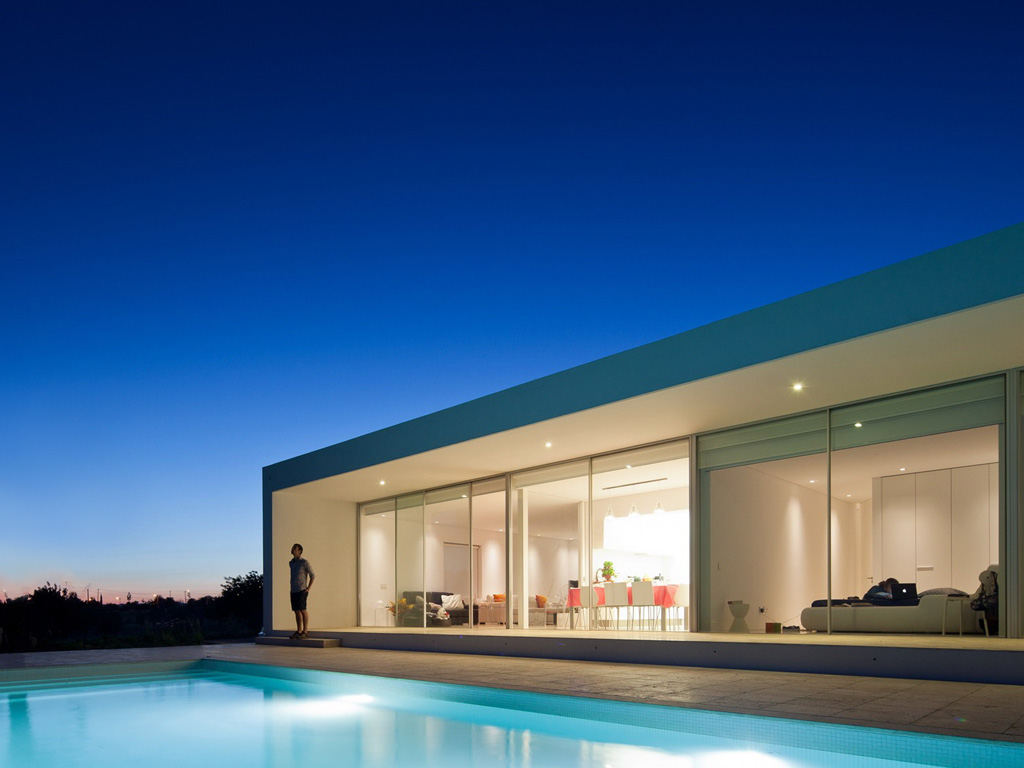

A former clinic from the 1970’s was refurbished and converted into a prototypical urban complex offering 50 student studios.
The site is located on the edge of downtown Patras in contact with the expropriating zone which will eventually bring into sight the Roman Hippodrome.
Along the street front, the existing building had on the first three floors, a "representative" façade and the typical of the era, oblong projecting balconies.
Due to the building’s recess on the upper floors, the façade was treated as of a "typical" polykatoikia.
In the inner courtyard side which had a considerably greater width in relation to the street’s, one encountered smaller openings and balconies along the full length of the building.
The scheme with regards to the building - city relation responds to three issues: with the dismantling of the projecting balconies to the widening of the street’s canyon; with the flatness and scale of the openings, to the new façade’s negotiation with the neighbouring neoclassical building and; with the provision of a communal programme at ground level and the creation of individual balconies and French windows which refer to each separate apartment, to the activation of the inner courtyard.
In the "widened" thus street, the twelve windows with the expressed aluminium frames, frame and reflect views of the old city while the electrical blinds alter the façade throughout the day.
In the inner courtyard, the new condition unravels the potentialities of activating the residual spaces of the Greek city.
The particularities of the programme required the demolition of all interior wall partitions on the eight levels in order to re-establish a logic in the building’s organisation. The size of the flats varies from 20 to 48 m².
Typologically the flats have been designed as ‘lofts’ with three distinct elements: an open, single space for living; a large window, framing the views towards the city; and an interstitial layer in-between the ‘communal’ access corridor and the ‘private’ living space, where the bathrooms, kitchen and storage spaces are located.
A further element which characterised the existing building was its atrium.
This vertical space becomes the social core of the building providing access to the flats while at the same time ensuring the bioclimatic benefits of a cross ventilated space.
Architects buerger katsota architects
Design Team Stephan Buerger, Demetra Katsota, Tassos Govatsos, Anna Karagianni, Mladen Stamenic
Structural Engineering Panayotis Panayotopoulos
M&E Engineering LDK Consultants
Project Management Frank E. Basil SA
Construction Management Panayotis Bousias
Client Hamlet Student Flats
Total Surface 2,300 m²
Design Date 2007
Completion Date 2011
Photos Yiorgis Yerolymbos
Stephan Buerger and Demetra Katsota established buerger katsota architects in 2005 with offices in Athens and Vienna.
The practice is currently involved in a wide range of international projects, as well as academic research on architecture.
buerger katsota architects’ work has been awarded prizes in several architectural competitions, widely published in reviews and publications and exhibited internationally.
‘House A+B’ was shortlisted for the 2013 Mies van den Rohe Award European Union Prize for Contemporary Architecture.
"Patras Student Studios2 has been awarded by the Hellenic Institute of Architecture in the "public and common use" category [2012 Awards], while ‘Villa S’ in Vienna - AT was awarded by the Union of Greek Architects in the ‘architecture beyond borders’ category [2011].
In 2012, the practice participated in the 13th Architecture Biennale of Venice with the project ‘PXATHENS’.
